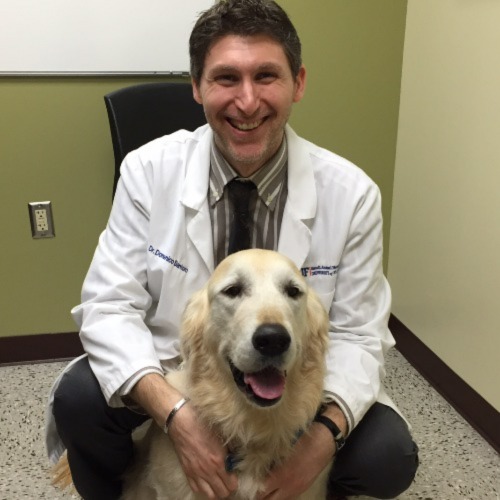Chasing our antibiotic tails: resistant staphylococci are charging ahead
Posted on February 14, 2023 by Domenico Santoro
Domenico Santoro takes us behind the scenes of his and his colleage, Michaela Burke's research 'Prevalence of multidrug-resistant coagulase-positive staphylococci in canine and feline dermatological patients over a 10-year period: a retrospective study' published in Microbiology.

Can you introduce yourself, your role and your research area?
I am Domenico Santoro, an Associate Professor in Veterinary Dermatology at the University of Florida, USA.
I am a veterinarian specialized in dermatology, microbiology and immunology. Since my PhD in veterinary immunology, I have been working on the pathomechanisms at the base of host-microbe interactions in allergic dogs, specifically focusing on Staphylococci and Malassezia organisms.
How did this research come about?
Cutaneous bacterial infections are extremely common in human and veterinary medicine. Unfortunately, the degree of drug resistance has been significantly increased in practice dramatically limiting the use of systemic antimicrobials in our patients. Based on these data and our experience at the University of Florida, I wanted to investigate the prevalence of methicillin- and multi-drug resistant Staphylococci affecting companion animals (dogs and cats) in my area.
University of Florida is one of the Academic institutions in which a sponsored program allows veterinary students to approach research during summer. This is a rigorous and involved program in which students will be closely working with a Faculty to complete a project during an 8-week period. The goal of this program is to allow the students to be exposed to research in a positive way. During this time, the student will work on a project with the intent to present the data in a National meeting and publish the results in a peer-reviewed journal.

Mikaela Burke and her dog
In the summer 2020, Mikaela Burke, first author on this manuscript, was working on her veterinary degree and approached me for the summer research program. As we had COVID-19 restrictions in place, I proposed to do a desk-based rather than bench-work study. Her project was to retrospectively search the medical database at our hospital to see how common bacterial resistance is among canine and feline patients with dermatological diseases. For the purpose of this research we were focusing on coagulase positive staphylococci as these are the most common organisms associated with bacterial skin infections in our companion animals.
Did anything in the findings surprise you? If so, why?
Although partially expected, the results of our study show how the prevalence of methicillin resistance in dogs with cutaneous problems has significantly increased in the past decade. Surprisingly, this was not followed by an increase in multi-drug resistance. This study also showed how the use of antibiotic is strongly associated with multi-drug resistant infections. In fact, if a dog is exposed to antibiotics and later on develops a skin infection, it is three times more likely that this infection is multi-drug resistant. Furthermore, this study showed how increased use of previously rarely used antibiotics (such as chloramphenicol) further contributes to antimicrobial pressure, increasing the occurrence of organisms resistant to these types of antibiotics. On the contrary, antibiotics like rifampin that are very rarely used in veterinary medicine because of its potentially life-threatening side effects, have virtually no antimicrobial resistance.
What do you hope the future implications of this research will be?
The goal of this study was to investigate how the prevalence of methicillin- and multidrug-resistance has changed over the past decade. We did find that methicillin resistance has increased as well as resistance to classes of antibiotics previously sporadically used (e.g., chloramphenicol).
We hope that papers like this would sensitize the general public and the research/clinical community to sporadically use antibiotics and to practice appropriate antimicrobial stewardship. This is essential to reduce the antimicrobial pressure and limit the spread of superbugs characterized by significant resistance to multiple classes of antibiotics.
